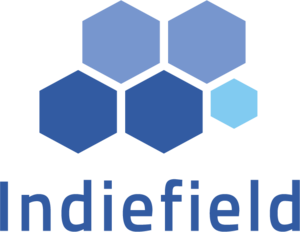Unlocking the Power of Customer Driven Decisions

We can argue about the definitions used for how ‘market research’ is defined in these studies, but the general direction is one of broadening spend on Customer Experience Management, a widening use of research technologies, passive data sources and automated packages; traditional spend on market research is falling within a broader context of increasing rhetoric about being more customer-centric.
As a sector, we are ideally placed to capitalise on this shift to customer centricity and yet the broad indication – and risk – is that we are not taking that opportunity. So, how do we address that and put ourselves at the centre of customer-centred decision making?
Creating Connection to Drive Decisions
One of the key challenges that businesses face is making better decisions – quickly. Whilst the rhetoric is all about the customer, the reality is often very different. A Deloitte study found that most executives do not believe their companies are insight-driven. That is, consistently embedding analysis, data, and evidence-based reasoning into the decision-making process. Only 37% place their company in the top two categories on the Deloitte ‘maturity scale’. A Forrester report goes further, claiming that just under a half of all business decisions are informed by information and/or analysis. What is more, this is static with roughly the same figure being reported for the last three years.
As insight experts, we understand a lot about how consumers make decisions; we have studied it for years, making it our central purpose to explain consumer decisions with many frameworks. But when it comes to business decision making, we know very little. In fact, there is very little written, generally, about this topic. No one – not even the management consultancies – have really staked a good claim over that territory. The best we have are some very simplistic – incredibly linear and unrealistic – models about corporate decision-making.
McKinsey & Company demonstrate the flaw in this unbalanced understanding; decision making takes up as much as 70% of a C-Suite executive’s time, typically equating to half a million days of managers’ time or $250m a year in salaries.
How much time do we, as a sector, spend thinking about how decisions get made? We see an exorbitant number of buzzwords around insight reporting, which can be sorted into common themes such as impact, activation, and story-telling. We have focussed a lot of energy on reporting our insights, but still with very little on understanding on how to help our clients’ businesses make better, informed, decisions.
Shifting our Outlook
Our role should be central to improving the way decisions get made in stakeholder organisations. It should not be a role sidelined to solely understanding consumer actions and decisions, but strategically placed at the centre of driving informed decision making. The opportunity is threefold:
- To own a strategically important aspect of organisational culture
- To affect many small decisions rather just a few large ones
- To have a greater financial and business impact
To achieve this requires a shift in mindset. One way to start making that shift is to replace our mantra of wanting a seat at the table – referring most often to the boardroom – with a desire to have a seat at many tables. That is to say, a presence in all decisions made by all teams at every level of the business.
For a business to drive the organisational change needed to make better quality decisions requires the customer to be placed at the centre of every decision. This in turn requires the insight industry to better understand how decisions in our organisations are made, and re-design them to ensure that customer-thinking plays a central role in those processes.
Enter Customer Salience.
Creating a Culture of Customer Salience
For a long-time, Brand Salience has been forefront of ours – and marketers – minds. It is central to how consumers make decisions. Now, is the time for us to make Customer Salience front and centre of how decisions are made. Building a culture of customer salience requires us to ensure that the customer is at the forefront of every decision, meaning that it becomes a driving force of change and not an add-on or reactive thought like we see daily. Customer insight should not be a project-to-project process, but a continuous programme of activity. But that is a change for the profession of an insight professional, moving from a focus on the data collection process and shift towards a role of guardianship over customer-driven decisions.
To aid this shift, FlexMR have been working with industry experts to develop a simple framework for building Customer Salience. By following these 4Cs, researchers can help organisations inform every decision, injecting the customer into every decision.
Challenge
As we need to break through our existing patterns of thinking and re-consider the role we play in organisations. As a profession, we need to re-set the way we define ourselves, braking out of the ‘data collection straightjacket’ that formed our past and must not, now, inform our future. From a process perspective each of us should re-think the way we set about our work, ensuring that the ‘project’ mentality does not constrain us in how we influence. As departments and teams we should challenge rituals and processes, which to this point have been instrumental to us, but in this new role might hold us back. We must ask questions that, until now, have seemed unquestionable.
Create
Following our review of how we work, we need to design-in a new strategy and tactics for delivering programmes of Customer Salience. We must ‘make decisions about decision making’, actively deciding how we create new processes that help put us – and the customer – at the table of very decision.
As a part of these new processes we must leverage the new technologies and tools available to us, helping us build a greater awareness of the customer across our organisations. Our new goal is to build awareness and culture and drive new decision-making processes.
Connect
To design-in Customer Saliency requires us to ensure teams have easy connection and access to customer understanding, closing the customer gap, increasing the number of informed decisions. A key metric of success is the proportion of decisions that are informed with customer data and insight. It is our role to Connect decision makers with customers in their everyday, not just at the exceptional meeting or occasional debrief. We must act to immerse and drive action, not just inform and leave.
Collaborate
Throughout, we must build internal bridges and tools that contribute to the ongoing culture of customer insight, collaborating at all levels. Collaboration is not just a way of imparting insight, but is a central way that decision makers internalise knowledge and drive action. Through collaboration we drive ownership and actions get taken. It is no longer our role to report and impact, but ours to collaborate and guide, following through the whole lifecycle of a decision to ensure that informed decisions are taken.
Understanding the 4Cs of Customer Salience is one thing, but putting them into practice is another. That’s why the FlexMR team have also developed the Customer Salience Toolkit containing practical resources to help insight teams and advocates start their quest for customer salience.

We hope you enjoyed this article.
Research Live is published by MRS.
The Market Research Society (MRS) exists to promote and protect the research sector, showcasing how research delivers impact for businesses and government.
Members of MRS enjoy many benefits including tailoured policy guidance, discounts on training and conferences, and access to member-only content.
For example, there's an archive of winning case studies from over a decade of MRS Awards.
Find out more about the benefits of joining MRS here.














0 Comments